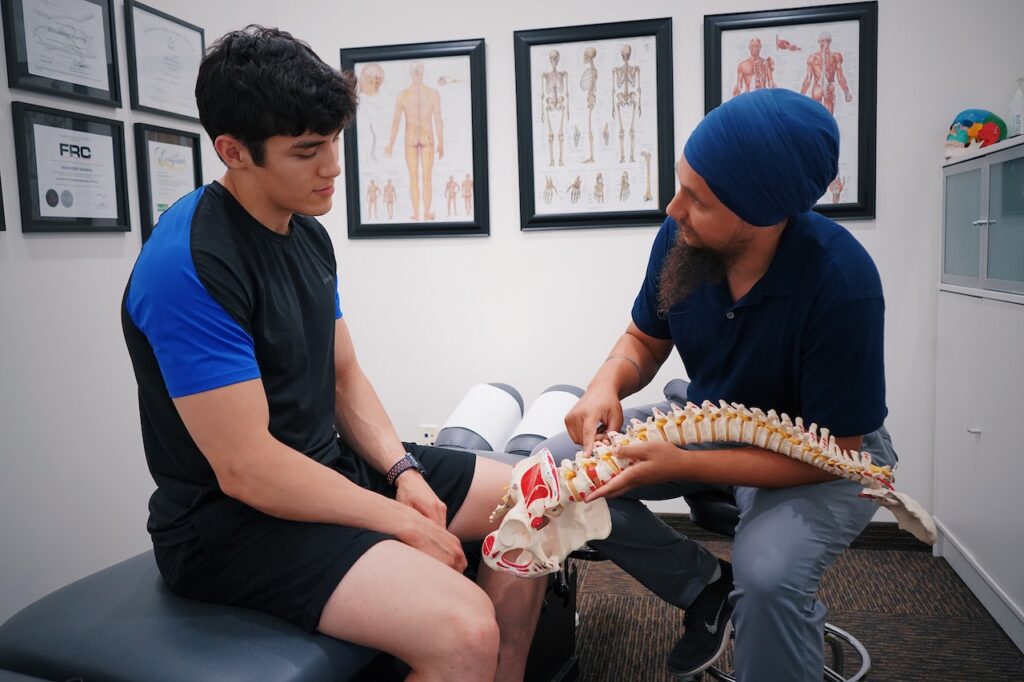
Back pain affects millions of people worldwide and can significantly impact a person’s quality of life. For many, spinal decompression therapy is a drug-free, low-cost, low-risk alternative to back surgery that can provide relief from pain and improve mobility.
Understanding Spinal Decompression
Spinal decompression therapy is a non-invasive treatment that involves gently stretching the spine to relieve pressure on the spinal discs. The therapy is performed on a special table that uses a motorized traction system to stretch the spine. The therapy is customized to meet the needs of each patient, and the treatment sessions typically last 25 minutes.
The goal of spinal decompression therapy is to alleviate pressure on the spinal discs, which are the cushioning structures that sit between the vertebrae. When the discs become compressed, it can cause pain and limit mobility. Spinal decompression therapy works by creating negative pressure within the discs, which helps to draw in nutrients and promote healing.
The Safety Considerations
Spinal decompression therapy is a safe and effective treatment option for many types of back pain, including herniated discs, bulging discs, sciatica, and degenerative disc disease. The therapy can also be used to treat neck pain, and it is often used in conjunction with other chiropractic treatments such as spinal adjustments.
Compared to back surgery, spinal decompression therapy is a much less invasive and risky option. Back surgery is a major procedure that involves cutting into the spine and removing portions of the vertebrae. The procedure carries a significant risk of complications, including infection, bleeding, and nerve damage. Recovery from back surgery can take several months, and the procedure can be costly.
In contrast, spinal decompression therapy is a non-invasive treatment that does not involve any cutting or surgery. The therapy is performed on an outpatient basis, and patients can typically resume their normal activities immediately following treatment. The therapy is also much less expensive than back surgery, making it a more accessible option for many patients.
It Just Isn’t For Everybody
Spinal decompression therapy is not suitable for everyone, and patients with certain medical conditions, such as spinal tumors or severe osteoporosis, may not be candidates for the treatment. However, for many patients with back pain, spinal decompression therapy can be an effective and low-risk option that provides relief from pain and improves overall quality of life.
In addition to providing relief from pain, spinal decompression therapy can also improve overall spinal health. In addition to recentering the nucleus of the disc and taking pressure off the nerve, the therapy can help rehydrate the disc to prevent further damage and reduce the risk of future back pain.
If you are experiencing back pain, it is important to consult with a qualified healthcare provider to determine the underlying cause of your pain and develop a treatment plan. In many cases, spinal decompression therapy can provide relief from pain and improve overall spinal health without the need for drugs or surgery.
Conclusion
In conclusion, spinal decompression therapy is a safe, effective, and low-cost alternative to back surgery for many patients with back pain. The therapy works by gently stretching the spine to relieve pressure on the spinal discs, promoting healing and improving mobility. Compared to back surgery, spinal decompression therapy is a much less invasive and risky option that provides relief from pain without the need for drugs or surgery. If you are experiencing back pain, consider consulting with a qualified chiropractor to learn more about spinal decompression therapy and other non-invasive treatment options.

